DIY Vertical Garden: Planting Succulents in a Picture Frame

A picture frame with succulents is perfectly suitable as an eye-catcher. Here you can find out how to make the small vertical garden with succulents yourself.
If you only have a small apartment with little storage space, you are often restricted when choosing your house plants. Nevertheless, you don't have to do without the green roommates - by creating vertical gardens, you can not only plant houseplants in the smallest of spaces, but also put them in the spotlight. How about a picture from succulents, for example? These robust plants are perfect as roommates due to their easy-care nature and can become a living work of art in the vertical garden. We have put together all the tips and tricks for you to keep in mind when planting succulents in the picture frame.
Unfortunately, not all succulent species can be used for planting in picture frames. Plants, which usually grow long and upright, are particularly unsuitable for vertical gardening with succulents because they do not find enough stability. Even deep rooters are not happy with the limited range of substrates. Smaller, more herbaceous or creeping succulents are better. Houseleek (Sempervivum), for example, is particularly popular because it is not only extremely robust, but also varies greatly in growth form and leaf color depending on the species, making it wonderfully versatile. Also, the Echeveria (like the Echeveria agavoides) is wonderfully suited with its splendid colors and its low stature. Not only that, some types of stonecrops (Sedum) such as the Purple Broadleaf Stonecrop (Sedum spathulifolium purpureum) also feel comfortable as succulents in a picture frame.
The Right Picture Frame
Basically, any deeper picture frame that is relatively stable is suitable for the design of a succulent picture. You can use old or cracked picture frames particularly well. Since the cover glass for the picture frame with succulents is not required, picture frames whose glass is broken or has disappeared, but which are otherwise in good condition can be recycled. Ideally, the picture frame should have a depth of three to four centimeters, as this means that more substrate is available for the plants. However, it is important that especially large picture frames are not too deep (maximum five centimeters), otherwise they will quickly become too heavy and can no longer be securely attached to the wall.
Which Soil Do Succulents Need in the Picture Frame?
Succulents are considered particularly robust, but have very special demands on their soil. In the case of succulents in the picture frame, it is particularly important to use a suitable substrate, since the plants have little soil available. And this should therefore meet the demands of the succulents as much as possible. This includes that the soil is loose but stable in shape, has good drainage capacity, but can also absorb water even after it has completely dried out. In addition, the nutrient requirements of the succulents in the picture frame should be optimally covered by the soil. Normal potting soil unfortunately does not meet these requirements - instead, one should use special cactus or succulent soil such as this best soil for succulents, which is adapted to the needs of the plants.
Planting Succulents in the Picture Frame: Instructions
Planting succulents in the picture frame sounds complicated, but it's not that difficult. In fact, only a few household products and a bit of manual skill are required to create a succulent picture.
For Succulents in a Picture Frame You Need:
· Deep picture frame
· Rabbit mesh or a fine-meshed metal grid
· Wire cutters and staplers
· Wooden nails and hammer
· Moss
· Succulent soil
· Succulents (buy at https://succulentalley.com/best-place-to-buy-succulents-online/)
· Plant stakes or chopstick
First of all, the selected picture frame must be freed from its glass pane and the rear wall and placed face down on the table. Then cut the rabbit mesh carefully to the size of the frame so that you can staple it on the inside edge of the frame. Once the mesh has been cut to size, you can cut off any excess edges.
Now place the moss plates on the picture frame with the green side down. You have to make sure that all edges and corners are well covered and sealed. In the case of smaller holes or uncovered areas, you can simply shred a moss plate appropriately and fill in the areas.
Next, spread cactus or succulent soil over the moss until the frame is filled to the top. In order to achieve an even result, shake the frame gently during this stage. After that, cut the back wall - or, if it is damaged, a piece of chipboard, to size - can be reattached to the picture frame. Hammer in small wooden nails at regular intervals. Alternatively, you can attach the back with a good wood glue or anything similar. Once the back is properly attached, you can turn the picture frame over so that the green side of the moss is facing up.
Now it is time to plant: Remove the succulents carefully from their pots and their roots from the soil. With a plant stake or chopstick, make a hole in the moss at the desired spot and press the roots of the succulents carefully into the soil. With larger plants, it may be necessary to enlarge individual wires of the mesh with scissors in order to place the plant appropriately. Press the plants in well, and, if possible, slide individual leaves under the mesh, so as to create a better hold. You should repeat this step until all plants are inserted accordingly.
1. Remove the glass and the back of the picture frame
2. Cut the mesh to size and fasten it from behind to the inner frame
3. Remove excess mesh
4. Place the moss on mesh without gaps and with the green side down
5. Fill the picture frame to the brim with cactus soil
6. Fasten the back with nails
7. Flip the photo frame over
8. Pour succulents from their pots and carefully remove the soil from the roots
9. Use a plant stake to poke holes in the moss at the desired spot and place the plant in it
10. Press the plant well and slide individual leaves under the mesh for a better hold
Succulents need a slightly different care in the picture frame than what you know from typical house plants. The plants need special attention especially in the first few weeks. In order that they maintain their hold in the substrate and do not simply fall out of the moss, you should first keep the succulent picture lying flat for two weeks until the succulents are rooted sufficiently. During this time, they should be placed in a bright area, but without contact with direct sunlight. After hanging the picture, you can water with a spray bottle. For this purpose, spray the water directly onto the moss every ten days (if possible without wetting the succulents). In addition, liquid fertilizer can be mixed into the irrigation water once a month in the growing period. In winter the watering intervals can be extended.
Enjoyed the project?
Resources for this project:
See all materialsComments
Join the conversation
-
 Christine Millership
on Aug 19, 2020
Christine Millership
on Aug 19, 2020
Granted, I live in hot, southern Spain, but I’ve made dozens of these succulent frames for my garden/house (indoor and outdoor) and gifts for people who admire them, so I’m offering up these extra tips to help......
- Steep the succulents in water for an hour or so before you want to put them in the frame, so that they have full leaves and stalks to start with, but don’t leave them overnight or it may damage the structure of the plant,
- Cut the roots from the plant head, leaving a 2 inch stalk.......I know, it sounds drastic, but you’re not killing them! Really! They have water in their full leaves, so will survive well until they can grow more roots. This makes the plants stay small and suitable for being in frames, so you can choose small aloe plants or baby succulents of larger varieties. It also makes the plants turn different colours, making a pretty frame of plants and not all green.
- Use glue to stick the succulents in to the moss. Easy when you’re simply glueing the stalk and not any roots. Not superglue, but use PVA. It doesn’t harm the plants at all and they do continue to thrive. Honest!
- Expect the plants to shrink as time goes by, as they empty themselves of the water in their leaves, so really overfill the frame. Additionally, add little plants in any gaps that open up as time goes by, sticking them in.
- I take the frames down regularly to lay horizontally in a flat pan of water to really steep them and then spray between times.
- Please do not use full strength fertiliser. It’s too strong for them, and will kill them eventually. Only use between 25 and 50% of the recommended dose. Alternatively, buy a special fertiliser......but it’s expensive, and is simply a weak version of ordinary garden liquid fertiliser, but of course, it’s up to you!
- If you use different types of succulents, you will get different colours and it will look like a mosaic. Even smaller versions of aloes (larger plants) can be used in a frame, as without their roots they take ages to start to grow (they will concentrate on growing new roots rather than leaves- succulents are all clever plants!). If a plant gets too big, just remove it and put something in its place.
Over time, I learned what types of plants do well in different locations, so if I see a plant struggling when others are ok, I simply swap it out and plant it elsewhere and it usually thrives somewhere else. Hope my tips help! x
-
-
 Emmawilliams1
on Aug 16, 2023
Emmawilliams1
on Aug 16, 2023
Yes, but $100.00 I may try as have many frames etc and chicken wire, but will use faux plants. The only healthy plant is a faux plant hahaha 😘
-



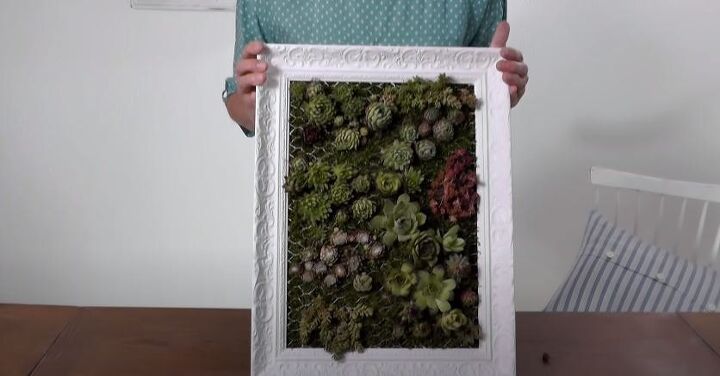
















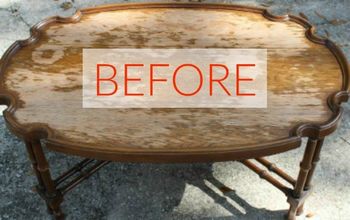




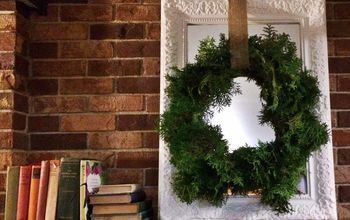
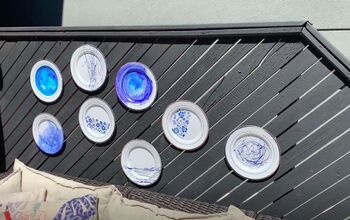





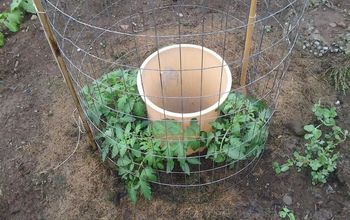


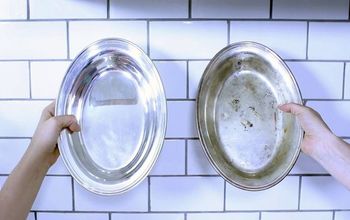







Frequently asked questions
Have a question about this project?
How do you keep it watered with our making a mess?
How do you spray water without getting water on the succulents?
seems impossible.
Looks like you made the frame deeper, you didn’t explain that?